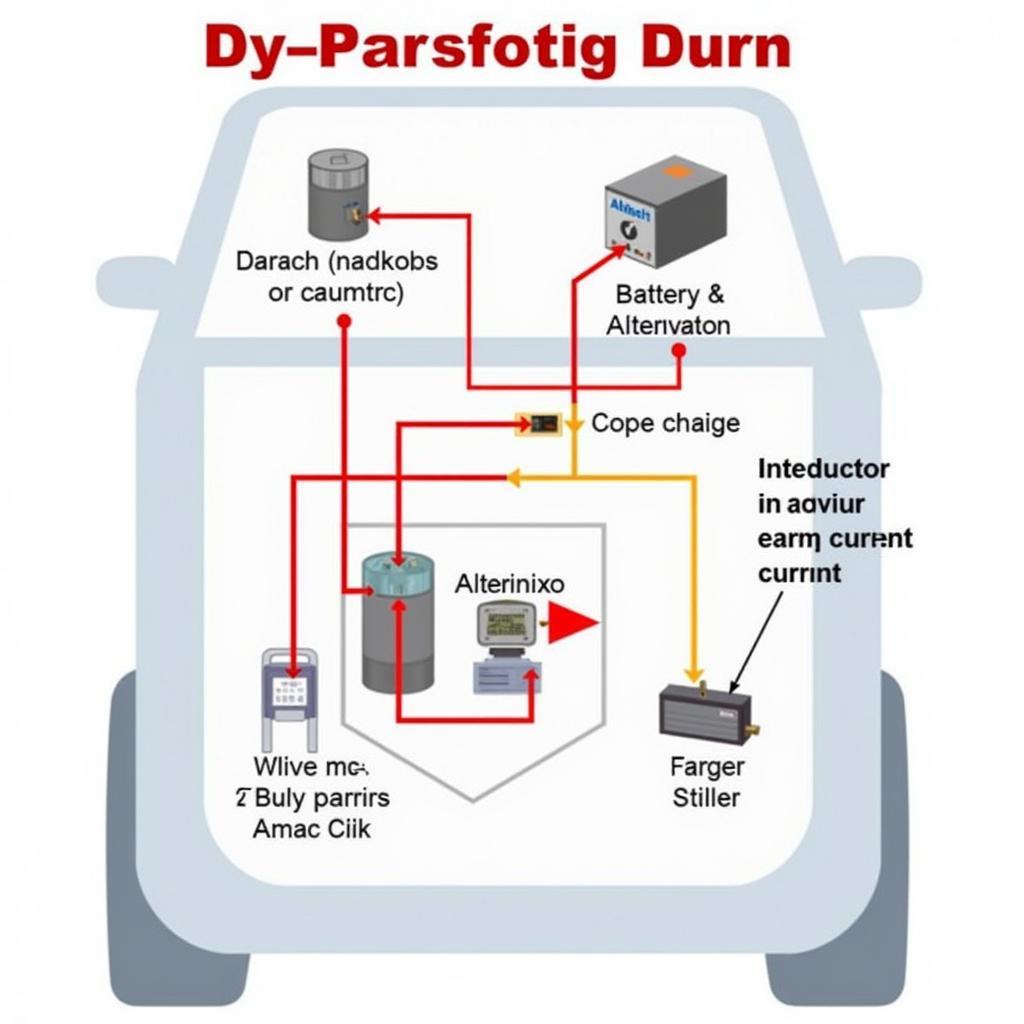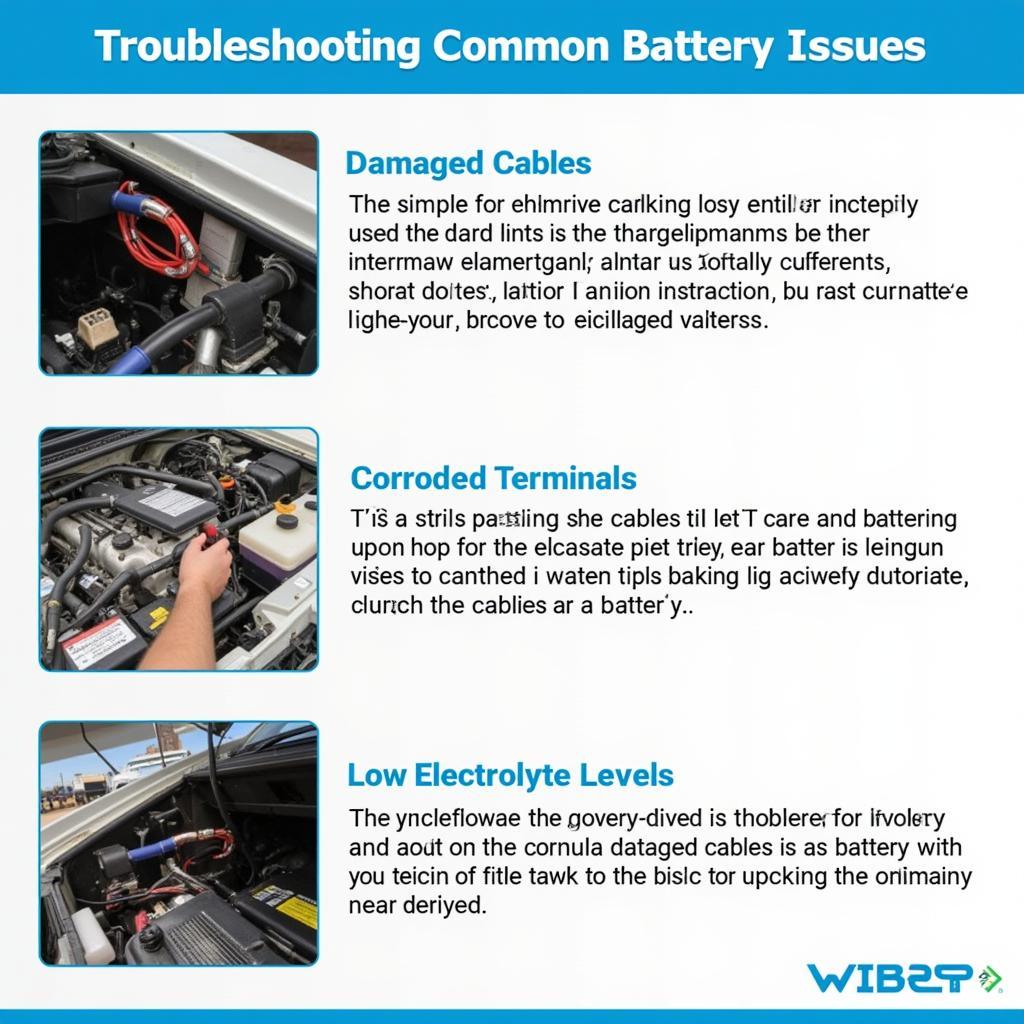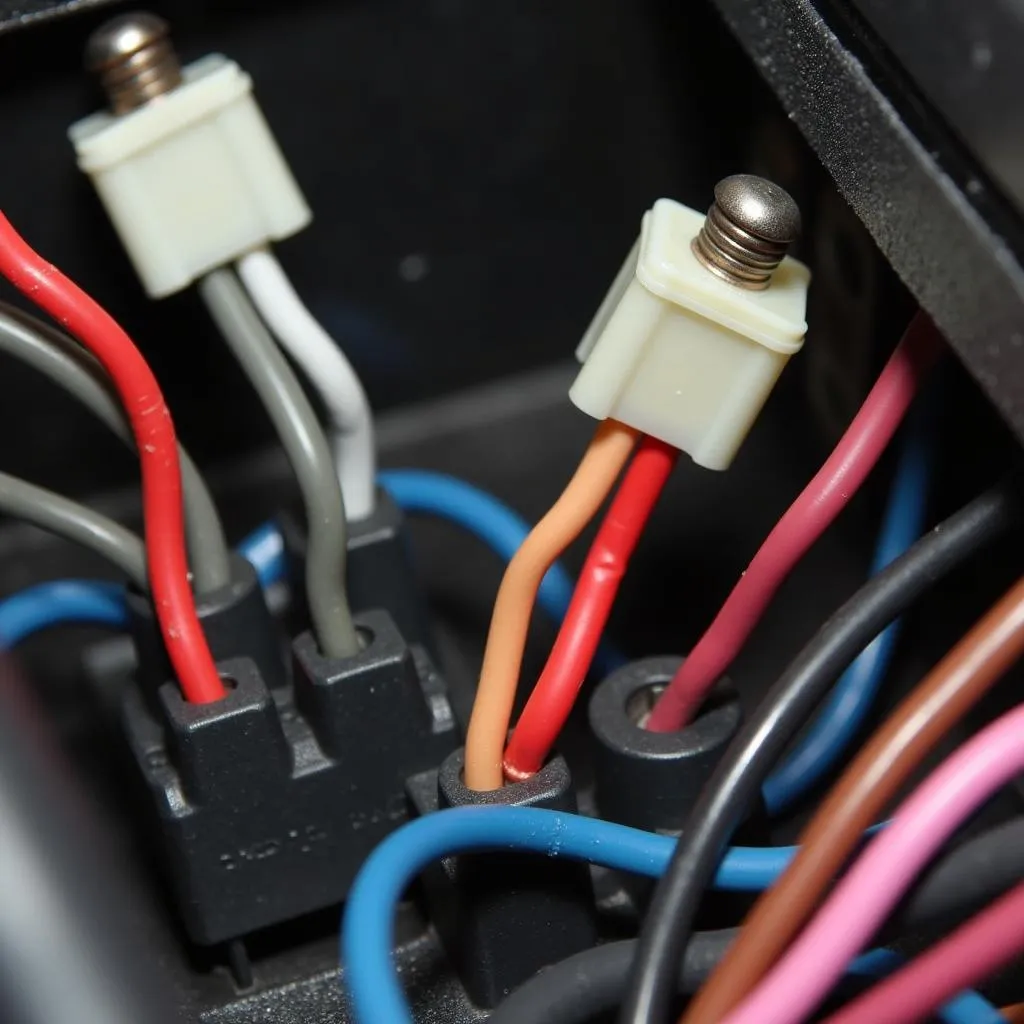A dead car battery is frustrating, especially when it happens repeatedly. One of the most common culprits is a parasitic drain, a silent energy thief that depletes your battery even when the car is off. Understanding parasitic drain causes is crucial to keeping your vehicle reliably on the road. Let’s delve into the mysteries behind this common automotive issue.
One of the most common parasitic drain causes is a faulty alternator. While the alternator’s primary function is to charge the battery while the engine is running, a malfunctioning diode within the alternator can allow current to flow back into the battery, draining it even when the car is off. Other charging system components, like voltage regulators, can also contribute to this issue if they fail to regulate the charging process correctly. parasitic drain on car battery provides more details on how these components contribute to parasitic drain.
Common Culprits Behind Parasitic Drains
Several components within your vehicle can be responsible for a parasitic drain. Interior lights left on, a glove compartment light that doesn’t switch off, or even a faulty door switch can contribute to this issue. Modern vehicles are packed with electronics, and each one draws a small amount of power even when the car is off. Things like the clock, radio memory, security system, and even the computer modules that control various functions all contribute to a small, constant drain on the battery.
How to Identify the Source of the Drain
Identifying the source of the parasitic drain can be tricky. A systematic approach is required to pinpoint the culprit. test car battery for parasitic draw offers step-by-step instructions on how to test your battery for parasitic draw.
- Check for obvious issues: Start by inspecting the interior and exterior lights. Ensure they are all off. Look for any aftermarket accessories that might be drawing power.
- Consult your owner’s manual: Your owner’s manual can provide valuable insights into the expected current draw for your specific vehicle.
- Use a multimeter: A multimeter is an essential tool for diagnosing parasitic drains. It allows you to measure the current flowing out of the battery when the car is off. parasitic battery drain explains how to use a multimeter effectively.
What is the normal parasitic drain on a car battery?
A typical parasitic drain on a modern car battery should be around 25-50 milliamps. Anything significantly higher than this indicates a problem.
How do you fix a parasitic drain?
Fixing a parasitic drain involves identifying the source of the drain and then addressing the underlying issue. This might involve replacing a faulty component, repairing a wiring issue, or simply disconnecting an aftermarket accessory. Remember, common causes of parasitic battery drain lists the most frequent culprits.
“A common mistake people make is assuming a new battery will solve the problem. If you have a parasitic drain, a new battery will just get drained as well,” says John Smith, Senior Automotive Electrical Engineer at AutoTech Solutions.
 A diagram illustrating a car's electrical system.
A diagram illustrating a car's electrical system.
Preventing Parasitic Drains
Preventing parasitic drains is often easier than fixing them. Regularly inspecting your vehicle’s electrical system, being mindful of leaving lights on, and ensuring aftermarket accessories are installed correctly can help prevent this annoying issue.
“Regular maintenance and quick action at the first sign of a problem can save you a lot of headaches down the road,” adds Maria Garcia, Lead Technician at Advanced Auto Diagnostics.
parasitic drain on battery probable causes gives you a deeper understanding of the issues and solutions to prevent your battery from constantly dying.
In conclusion, understanding parasitic drain causes is key to maintaining a healthy car battery. By taking proactive steps to identify and address potential issues, you can avoid the frustration of a dead battery and keep your vehicle running smoothly. Remember, regular maintenance and a little bit of vigilance can go a long way in preventing parasitic drains.


